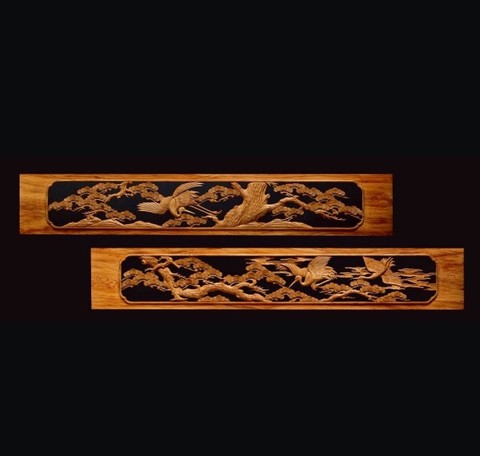
大阪欄間の始まりは17世紀初期で、大阪府内の聖神社や四天王寺等にその伝統技法のもととなる技術がみられます。
その後、江戸時代中期には商家を中心とした一般の住宅の茶の間、客間等の鴨居(かもい)の上に、光を取り入れたり風通しを良くするという実用性と、品格を表すための室内装飾として取り付けられました。

The origins of this craft date back to the beginning of the 17th century and the traditional woodworking skills that can be seen at Osaka's Hijiri Shrine and Shiteno-ji temple. Gradually during the 18th century, transoms were mainly introduced into merchant's houses not only for practical reasons of ventilation and lighting but also as a decorative element capable of raising the quality of interior space, especially in rooms where guest would be received.
There are many types of transom. The bold carving of one type helps to bring out the best qualities of the grain of the special Yaku cedar from which it is made. A wonderful balance between the grain of paulownia and open-work in the design is achieved in another. Some are strict bars or a repeat of one element, others are grills. Still others are not much more than a frame but all are pieces of decoration with a function. Despite the fall in the number of traditional houses being built, they make screens, picture frames, and there are still 22 firms with 77 employees and 21 nationally recognized Master Craftsmen working on this fitting that is so special to the Japanese house interior.